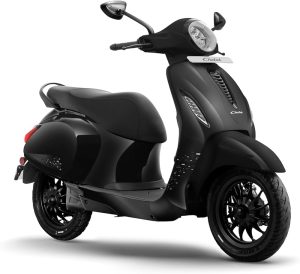7 Fascinating Facts You Didn’t Know About Excavators

An excavator is a heavy construction vehicle used to dig holes in the ground and to move large piles of rubble. This robust heavy-duty piece of machinery consists of housing where an operator sits to control the dipper, boom and bucket of the excavator.
Today we’ll be discussing seven fascinating facts about excavators that you may not have heard of. So when you’re looking for an excavator for sale for your construction projects, you’ll have extensive knowledge about your purchase.
1. France Developed a New Concept of Excavator
There have been many forms of excavators throughout history. The first concept for an excavator was said to have been invented in the 1700s. However, the first hydraulic excavator was designed by Sir W.G Armstrong and Company in 1882 in England. Water was used to operate these excavators.
In 1952 a French company by the name of Poclain produced a new design of excavator that moved away from the use of winches and cables. Instead, these excavators were designed to be used with new hydraulic technology that made them more efficient and they required less maintenance.
Nine years later Poclain made additional changes to their design. The company produced an excavator called the TY45 which was the first of its kind to rotate a full 360°. Thanks to Poclain hydraulic excavators became more prevalent in the use of construction because of how efficient they were.
2. Excavators Come in a Variety of Sizes
Different sized excavators are designed for various tasks. Mini excavators come in sizes ranging between 1.5 tons and 5 tons. These excavators are suitable for digging up dirt for swimming pools, preparing foundations for houses, renovations and even demolishing small structures.
Larger excavators can weigh as much as 780 tons and these machines are suitable for bigger construction projects. These bigger excavators are typically used for strip mining and canal dredging.
About the World’s Largest Hydraulic Excavator
The Bucyrus RH400 by Caterpillar holds the title for the world’s largest hydraulic excavator. This huge machine was the inspiration behind the Decepticon Demolisher in the second Transformer movie and it also appeared in the film.
Caterpillar’s RH400 excavator weighs 980 tons and stands at least three stories high. This massive excavator can move 9000 tons of rubble in under one hour due to its powerful 4500HP diesel engine.
3. What was The First Excavator Like?
As mentioned before the first excavator was developed in 1796 but this was known as the steam shovel. It was first patented by William Otis in 1839 which was 40 years after the steam shovel was invented. William’s steam shovel was operated using pulleys, chains and gears.
The steam shovel was used to develop railways which is why the machine was transported using railroad tracks.
4. The World’s Heaviest Excavator
We spoke about the world’s largest hydraulic excavator but what about a machine that doesn’t use this technology? The Bagger 293 excavator which was developed by a German company called TAKRAF is known as the world’s heaviest land vehicle that doesn’t use hydraulics.
TAKRAF’s Bagger 293 weighs a whopping 14,200 tons and a crew of up to five people will be required to operate it. This massive excavator can move up to 8.5 million cubic feet of earth in one day. The large land machine is so big that it can be seen via satellite imagery from space.
5. An Excavator Does the Job of 20 People
The purpose of using construction machinery is to make short work of the project. In ancient times it took civilisations many years to build their large structures because the people could only use their hands and the limited equipment they had at the time.
With modern construction vehicles, building projects can be completed within six months to a year depending on how big the project is. Fortunately, an excavator can do the job of up to 20 people. This makes construction projects cost-efficient because contractors will only have to pay one member to operate the excavator instead of 20 labourers to complete a task.
6. Safety Tips for the Excavator Operator
The excavator must be on at all times when operating the machine in case the operator needs to remove a load from the bucket immediately. Excavators must have sufficient fuel in the tank at all times to prevent the machine from shutting down.
7. Undercutting and Overloading Risks
An undercut occurs when an excavator operator digs up the ground below the machine which can cause the earth below it to collapse. That’s why excavator operators ensure that the machine’s tracks are always perpendicular to the excavation in case the ground caves in below the vehicle.
Overloading the excavator bucket can also cause the vehicle to tip. So operators must learn about the excavator’s capacity limit to ensure accidents don’t occur.
Final Thoughts
Now that you know more about excavators will you be purchasing one for your building projects? You can find a premium excavator for sale through a Kubota dealer. We hope you find an excellent deal on your excavator and enjoy the final results of your project!






